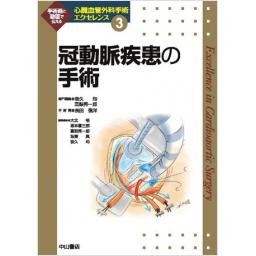1) Boden WE, et al. Optimal medical therapy with or without PCI for stable coronary disease. N Engl J Med 2007 ; 356 : 1503-16.
2) Pijls NH, et al. Fractional flow reserve versus angiography for guiding percutaneous coronary intervention in patients with multivessel coronary artery disease : 2-year follow-up of the FAME (Fractional Flow Reserve Versus Angiography for Multivessel Evaluation) study. J Am Coll Cardiol 2010 ; 56 : 177-84.
3) De Bruyne B, et al. Fractional flow reserve-guided PCI for stable coronary artery disease. N Engl J Med 2014 ; 371 : 1208-17.
4) Windecker S, et al. ESC/EACTS myocardial revascularization guidelines 2014. Eur Heart J 2014 ; 35 : 2541-619.
5) BARI-2D Study Group. A randomized trial of therapies for type 2 diabetes and coronary artery disease. N Engl J Med 2009 ; 360 : 2503-15.
7) Pijls NH, et al. Measurement of fractional flow reserve to assess the functional severity of coronary-artery stenoses. N Engl J Med 1996 ; 334 : 1703-8.
8) Kern MJ, Samady H. Current concepts of integrated coronary physiology in the catheterization laboratory. J Am Coll Cardiol 2010 ; 55 : 173-85.
9) Mouden M, et al. Myocardial perfusion imaging with a cadmium zinc telluride-based gamma camera versus invasive fractional flow reserve. Eur J Nucl Med Mol Imaging 2014 ; 41 : 956-62.
10) Lima RS, et al. Incremental value of combined perfusion and function over perfusion alone by gated SPECT myocardial perfusion imaging for detection of severe three-vessel coronary artery disease. J Am Coll Cardiol 2003 ; 42 : 64-70.
11) Tonino PA, et al. Angiographic versus functional severity of coronary artery stenoses in the FAME study fractional flow reserve versus angiography in multivessel evaluation. J Am Coll Cardiol 2010 ; 55 : 2816-21.
12) Curzen N, et al. Does routine pressure wire assessment influence management strategy at coronary angiography for diagnosis of chest pain? : the RIPCORD study. Circ Cardiovasc Interv 2014 ; 7 : 248-55.
13) Shiono Y, et al. Impact of myocardial supply area on the transstenotic hemodynamics as determined by fractional flow reserve. Catheter Cardiovasc Interv 2014 ; 84 : 406-13.
14) Hamilos M, et al. Long-term clinical outcome after fractional flow reserve-guided treatment in patients with angiographically equivocal left main coronary artery stenosis. Circulation 2009 ; 120 : 1505-12.
15) Serruys PW, et al, SYNTAX Investigators. Percutaneous coronary intervention versus coronary-artery bypass grafting for severe coronary artery disease. N Engl J Med 2009 ; 360 : 961-72.
17) Genereux P, et al. SYNTAX score reproducibility and variability between interventional cardiologists, core laboratory technicians, and quantitative coronary measurements. Circ Cardiovasc Interv 2011 ; 4 : 553-61.
18) Nam CW, et al. Functional SYNTAX score for risk assessment in multivessel coronary artery disease. J Am Coll Cardiol 2011 ; 58 : 1211-8.
19) Van Belle E, et al. Outcome impact of coronary revascularization strategy reclassification with fractional flow reserve at time of diagnostic angiography : insights from a large French multicenter fractional flow reserve registry. Circulation 2014 ; 129 : 173-85.
20) Farooq V, et al. Quantification of incomplete revascularization and its association with five-year mortality in the synergy between percutaneous coronary intervention with taxus and cardiac surgery & (SYNTAX) trial validation of the residual SYNTAX score. Circulation 2013 ; 128 : 141-51.
21) Kobayashi Y, et al. The prognostic value of residual coronary stenoses after functionally complete revascularization. J Am Coll Cardiol 2016 ; 67 : 1701-11.
22) Ferguson TB Jr, et al. Fractional flow reserve-guided coronary artery bypass grafting : can intraoperative physiologic imaging guide decision making? J Thorac Cardiovasc Surg 2013 ; 146 : 824-35.
23) Botman CJ, et al. Does stenosis severity of native vessels influence bypass graft patency? A prospective fractional flow reserve-guided study. Ann Thorac Surg 2007 ; 83 : 2093-7.
24) Sabik JF 3rd, et al. Does grafting coronary arteries with only moderate stenosis affect long-term mortality? J Thorac Cardiovasc Surg 2016 ; 151 : 806-11.
25) Toth G, et al. Fractional flow reserve-guided versus angiography-guided coronary artery bypass graft surgery. Circulation 2013 ; 128 : 1405-11.
26) Toth GG, et al. Graft patency after FFR-guided versus angiography-guided coronary artery bypass grafting : the GRAFFITI trial. EuroIntervention 2019 ; 15 : e999-1005.
27) Thuesen AL, et al. Fractional Flow Reserve Versus Angiographically-Guided Coronary Artery Bypass Grafting. J Am Coll Cardiol 2018 ; 72 : 2732-43.
28) Zimmermann FM, et al. Rationale and design of the Fractional Flow Reserve versus Angiography for Multivessel Evaluation (FAME) 3 Trial : a comparison of fractional flow reserve-guided percutaneous coronary intervention and coronary artery bypass graft surgery in patients with multivessel coronary artery disease. Am Heart J 2015 ; 170 : 619-26.
29) Sellke FW, et al. Current state of surgical myocardial revascularization. Circ J 2010 ; 74 : 1031-7.
30) Shiono Y, et al. Impact of functional focal versus diffuse coronary artery disease on bypass graft patency. Int J Cardiol 2016 ; 222 : 16-21.
31) Min JK, et al. Diagnostic accuracy of fractional flow reserve from anatomic CT angiography fractional flow reserve from CT angiography. JAMA 2012 ; 308 : 1237-45.
32) Norgaard BL, et al. Diagnostic performance of noninvasive fractional flow reserve derived from coronary computed tomography angiography in suspected coronary artery disease : the NXT trial (Analysis of Coronary Blood Flow Using CT Angiography : Next Steps). J Am Coll Cardiol 2014 ; 63 : 1145-55.
